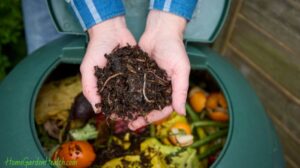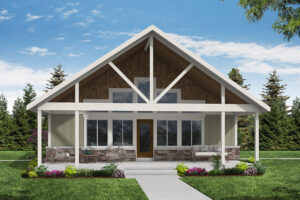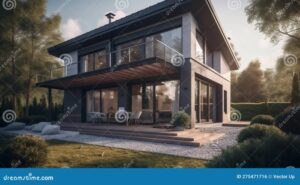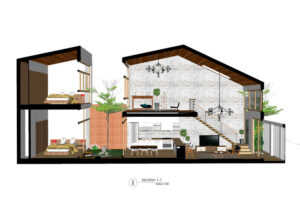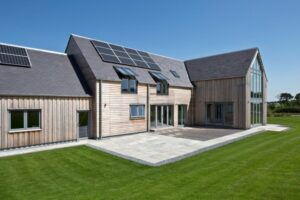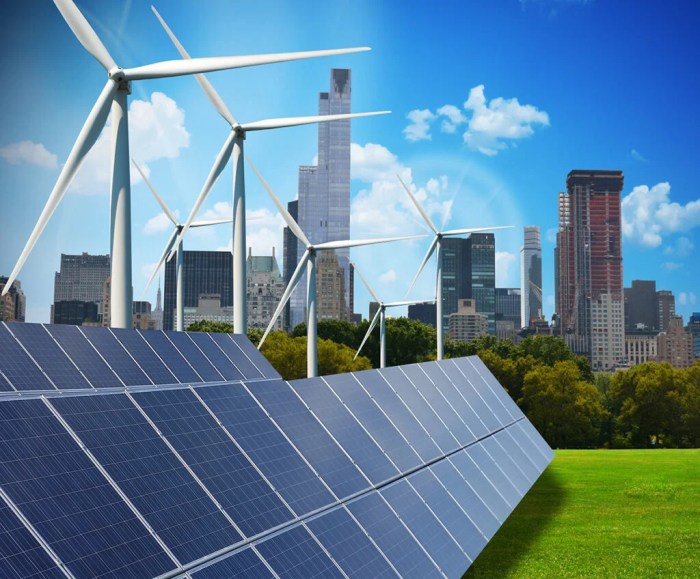
Green energy solutions are revolutionizing how we think about power and sustainability. As the world grapples with climate change and dwindling resources, these innovative approaches to energy production are becoming increasingly essential. From harnessing the sun’s rays to capturing the wind’s might, green energy sources are paving the way for a cleaner, more sustainable future.
This overview delves into various green energy sources, including solar, wind, and hydroelectric, while highlighting their significance for both individuals and businesses. Embracing these solutions not only benefits the environment but also offers economic advantages, making the transition to green energy a win-win situation for all.
Green Energy Solutions Overview
Green energy solutions refer to the utilization of renewable resources to generate power and reduce reliance on fossil fuels. In today’s world, where climate change and environmental degradation pose significant threats, these solutions have become essential. They play a crucial role in promoting sustainability, reducing greenhouse gas emissions, and fostering energy independence.Various types of green energy sources are at the forefront of the transition to sustainable energy systems.
Among these, solar energy harnesses sunlight through photovoltaic cells, wind energy utilizes turbines to convert wind flow into electricity, and hydroelectric energy derives power from flowing water. Each of these sources contributes uniquely to the energy grid and offers distinct advantages.
Types of Green Energy Sources
Understanding the various types of green energy sources is pivotal for individuals and businesses looking to make informed energy choices. The following sections detail key renewable energy options:
Solar Energy
Solar energy is generated through the conversion of sunlight into electricity. Photovoltaic panels installed on rooftops or solar farms capture sunlight, making it a widely accessible energy solution. The benefits of solar energy include:
- Reduction in electricity bills, as solar power can significantly lower reliance on grid power.
- Low maintenance costs, since solar panel systems require minimal upkeep after installation.
- Increased property value due to the installation of solar energy systems.
Wind Energy
Wind energy is produced by converting the kinetic energy from wind into electrical power using wind turbines. This form of energy is particularly effective in areas with consistent wind patterns. The advantages include:
- Minimal environmental impact compared to fossil fuel extraction.
- Job creation in wind turbine manufacturing and maintenance sectors.
- Scalability, as wind farms can be developed in varying sizes, from small community projects to large utility-scale installations.
Hydroelectric Energy
Hydroelectric energy is generated by the flow of water, typically through dams that manage water flow to produce electricity. This renewable source contributes significantly to global energy supply. Key benefits comprise:
- Consistent and reliable energy production due to water flow management.
- Ability to provide energy storage through pumped storage systems, balancing supply and demand.
- Low emissions during operation, making it an environmentally friendly option.
The transition to green energy not only benefits the environment but also provides substantial economic advantages for individuals and businesses. By embracing renewable energy sources, stakeholders can contribute to a more sustainable future while enjoying cost savings and improved energy resilience.
“Transitioning to renewable energy sources is not just a choice; it’s a necessity for a sustainable future.”
Home Furniture and Green Energy
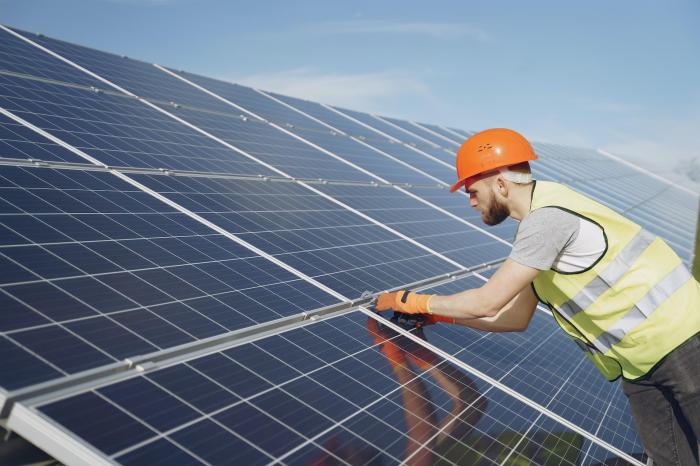
The intersection of home furniture and green energy is a growing concern as consumers increasingly seek sustainable living options. Furniture production, traditionally linked to deforestation and waste, has seen a shift towards eco-friendly practices. Understanding the materials and design methodologies behind green furniture can help consumers make informed choices that contribute to a healthier planet.Sustainable furniture not only prioritizes environmental conservation but also enhances the quality of life within homes.
The use of eco-friendly materials and innovative design practices reduces waste and fosters a more sustainable resource cycle. As the demand for green furniture grows, various brands have stepped up to offer solutions that align with these values.
Eco-Friendly Materials in Home Furniture Production
The choice of materials plays a vital role in sustainable furniture production. Here are some of the most common eco-friendly materials used:
- Bamboo: A fast-growing plant that requires minimal resources to cultivate and is biodegradable, making it a great alternative to traditional hardwood.
- Reclaimed Wood: Salvaged wood from old buildings or furniture reduces the need for new timber, thus preserving forests and lowering carbon emissions associated with timber production.
- Recycled Metal: Using recycled metals in furniture reduces the energy consumption and pollution associated with mining and processing new metals.
- Organic Fabrics: Materials such as organic cotton, linen, and hemp are grown without harmful pesticides and chemicals, ensuring a safer environment and healthier indoor air quality.
- Low-VOC Finishes: Finishes and adhesives that emit low levels of volatile organic compounds (VOCs) help maintain healthier indoor air quality.
Sustainable Furniture Design Practices
Sustainable design practices are essential in reducing the overall environmental impact of furniture. These practices focus on longevity, versatility, and environmentally responsible manufacturing processes. Key design practices include:
- Modular Design: Furniture that can be easily adapted or expanded allows for longevity, reducing the need for new purchases.
- Minimalism: Emphasizing simplicity and functionality reduces material waste and promotes the use of fewer resources.
- Local Sourcing: Using locally sourced materials minimizes transportation emissions and supports local economies.
- Product Lifespan Consideration: Designing furniture with an emphasis on durability ensures that products last longer and reduce waste in landfills.
- Recyclability: Creating furniture that can be easily disassembled and recycled at the end of its life cycle helps close the material loop.
Brands Specializing in Green Furniture Solutions
Several brands are leading the way in offering eco-friendly furniture options. Their commitment to sustainability is reflected in their products and practices. Some noteworthy examples include:
- Greenington: Specializes in bamboo furniture, providing stylish designs while promoting sustainable forestry practices.
- West Elm: Offers a wide range of sustainably sourced furniture and decor items, using reclaimed, recycled, and organic materials.
- Fjords: Focuses on Norwegian design principles, producing furniture from sustainable materials with an emphasis on comfort and quality.
- Burrow: Known for its modular sofas made from responsibly sourced materials and a focus on minimal waste in production.
- Vermont Woods Studios: Creates handcrafted wooden furniture from sustainably harvested local trees, emphasizing craftsmanship and environmental responsibility.
Green Living Practices
Adopting green living practices in our daily lives is essential for the sustainability of our planet. These practices not only help in conserving resources but also promote a healthier lifestyle. By incorporating simple habits, we can significantly reduce our environmental footprint and contribute to a more sustainable future.
Daily Habits for Green Living
Implementing daily habits that promote green living can transform our homes into eco-friendly spaces. Simple actions, when multiplied across households, can lead to significant positive impacts on the environment. Here are some effective practices to consider:
- Utilize energy-efficient appliances to minimize electricity consumption.
- Opt for reusable shopping bags instead of single-use plastic bags.
- Switch off lights and unplug devices when not in use to save energy.
- Incorporate indoor plants to improve air quality naturally.
- Choose sustainable materials for home furnishings and decor.
Methods for Reducing Energy Consumption
Reducing energy consumption at home is crucial for lowering utility bills and decreasing greenhouse gas emissions. There are various strategies to achieve this, which not only benefit the environment but also promote energy efficiency. The following methods are effective in minimizing energy usage:
- Install programmable thermostats to optimize heating and cooling schedules.
- Use LED bulbs that consume significantly less energy than traditional incandescent bulbs.
- Seal windows and doors to prevent drafts and enhance insulation.
- Limit the use of space heaters and air conditioning by utilizing natural ventilation.
- Regularly maintain appliances to ensure they operate efficiently.
The Significance of Recycling and Composting
Recycling and composting play a vital role in green living by reducing waste and conserving resources. These practices not only help in managing household waste but also contribute to the overall health of the environment. Understanding their importance can encourage more individuals to participate actively in these activities:
- Recycling materials such as paper, glass, and plastics reduces the need for new raw materials, conserving natural resources.
- Composting organic waste transforms kitchen scraps into nutrient-rich soil, promoting healthier gardens.
- Both recycling and composting help decrease landfill waste, which is a significant source of methane emissions.
- Engaging in these practices fosters a community spirit and encourages sustainable habits among neighbors.
“Recycling one ton of paper can save 17 trees, 7,000 gallons of water, and 4,100 kilowatts of electricity.”
Heating and Air Conditioning Solutions
In today’s world, where energy efficiency is more crucial than ever, heating and air conditioning solutions have evolved significantly. Traditional systems often rely on fossil fuels and can be inefficient, leading to higher energy costs and greater environmental impact. Green alternatives, on the other hand, offer a sustainable approach to maintaining comfort in our homes while reducing our carbon footprint.The shift from traditional heating and cooling systems to energy-efficient appliances not only helps in conserving resources but also significantly lowers energy bills.
Energy-efficient systems, such as heat pumps and high-efficiency furnaces, utilize advanced technology to provide the same comfort level while consuming less energy. For instance, Energy Star-rated appliances can reduce energy consumption by up to 30% compared to standard models. This not only benefits the environment but also leads to substantial savings on utility bills over time.
Benefits of Energy-Efficient Appliances
Energy-efficient appliances present numerous advantages that extend beyond mere cost savings. They are designed to use less electricity, which translates to lower monthly energy bills for homeowners. Here are some key benefits of these appliances:
- Lower Operating Costs: Energy-efficient models often have lower operating costs due to their reduced energy consumption. For example, a high-efficiency air conditioner can save homeowners hundreds of dollars annually in energy bills.
- Environmental Impact: By using less energy, these appliances contribute to a decrease in greenhouse gas emissions, helping combat climate change.
- Longer Lifespan: Many energy-efficient appliances are built with higher quality materials, leading to a longer lifespan. This reduces the need for replacements and can save money in the long run.
- Increased Comfort: Advanced technology in energy-efficient systems often results in better temperature control and air quality, enhancing overall comfort in the home.
Maintenance Tips for HVAC Systems
Proper maintenance of heating, ventilation, and air conditioning (HVAC) systems is essential to improve their energy efficiency and ensure they operate effectively. Regular maintenance can prevent system breakdowns and extend the lifespan of the units. Consider the following tips to keep your HVAC systems in optimal condition:
- Change Filters Regularly: Dirty filters restrict airflow and cause the system to work harder. Changing filters every 1 to 3 months can significantly improve efficiency.
- Schedule Annual Inspections: Regular professional maintenance checks can identify potential issues before they lead to costly repairs, ensuring your system runs efficiently.
- Clean Coils and Fins: Dust and debris can accumulate on coils and fins, reducing the system’s efficiency. Cleaning these components can enhance performance.
- Seal Ducts: Leaky ductwork can lead to significant energy loss. Sealing and insulating ducts can improve the overall efficiency of your heating and cooling systems.
- Program Thermostats: Utilizing programmable thermostats can help manage energy use by adjusting temperatures based on your schedule, leading to further savings.
Regular maintenance and the use of energy-efficient appliances are key components in achieving a balance between comfort and sustainability in our homes.
Home Inspections for Energy Efficiency

Home inspections focused on energy efficiency are essential for identifying areas where homeowners can save on energy costs and enhance comfort. These assessments play a vital role in improving the overall performance of a home, ensuring that it operates efficiently and sustainably. With the increasing focus on green living, understanding how to conduct a thorough home inspection can lead to substantial benefits for both the environment and the homeowner’s budget.An energy audit is a systematic examination of how energy is used within a home.
It assesses various elements that contribute to energy consumption and identifies opportunities for improvement. By engaging a trained professional to conduct energy audits, homeowners can gain insights into their energy use patterns and receive targeted recommendations for enhancing energy efficiency. This process not only helps in reducing energy bills but also contributes to a more sustainable environment by minimizing the carbon footprint.
Key Areas to Inspect for Energy Efficiency
During home assessments, key areas should be prioritized to evaluate energy efficiency effectively. By focusing on these elements, homeowners can identify potential issues that may lead to energy waste.
- Insulation: Inspect the attic, walls, and floors to ensure adequate insulation levels. Proper insulation helps in maintaining indoor temperatures and reduces the need for heating and cooling.
- Windows and Doors: Check for air leaks around windows and doors. Replacing or sealing drafty windows and doors can significantly enhance energy efficiency.
- Heating and Cooling Systems: Evaluate the efficiency of HVAC systems. Regular maintenance and upgrades can lead to substantial energy savings.
- Appliances: Review the energy ratings of appliances. Energy-efficient models consume less power, which can lower utility bills.
- Lighting: Consider the types of bulbs in use. Transitioning to LED lighting can dramatically reduce electricity consumption.
- Water Heating: Inspect the water heater for efficiency. Insulating the water heater and pipes can prevent heat loss.
Energy Audit Process for Home Performance Improvement
The process of conducting an energy audit involves several steps that ensure a comprehensive evaluation of a home’s energy use. This detailed approach helps in identifying specific areas where improvements can be made.
- Initial Consultation: A professional energy auditor begins with a discussion of the homeowner’s energy concerns and goals.
- Visual Inspection: The auditor performs a thorough walk-through of the home, examining insulation, HVAC systems, and appliances.
- Testing for Air Leaks: Blower door tests may be conducted to measure air leakage throughout the house, identifying areas that need sealing.
- Thermal Imaging: Infrared cameras can be used to visualize heat loss, providing insights into insulation performance and air leaks.
- Report Generation: After the audit, a detailed report is provided, outlining findings and recommendations for energy efficiency improvements.
Checklist for Homeowners to Prepare for Energy Inspections
Preparing for an energy inspection can help streamline the process and ensure a comprehensive evaluation. Homeowners can follow this checklist to optimize their energy audit experience.
- Gather utility bills from the past year to provide context for energy usage.
- Make a list of any existing concerns regarding heating or cooling inefficiencies.
- Ensure easy access to areas such as the attic, basement, and mechanical rooms.
- Document any recent upgrades or changes made to the home, including new windows or appliances.
- Be prepared to answer questions about daily household habits that affect energy use.
Planning Green House Designs
Designing energy-efficient house plans is crucial in the quest for sustainable living. The integration of environmentally friendly practices in home design not only reduces energy consumption but also enhances the quality of life for occupants. Adopting green principles during the planning phase ensures that homes are resilient, cost-effective, and harmonious with their surroundings.Energy-efficient house plans are founded on several key principles aimed at minimizing environmental impact.
These principles include optimizing natural light, enhancing insulation, and using renewable energy sources. Additionally, the layout of the house should facilitate natural ventilation and reduce reliance on mechanical heating and cooling systems.
Materials and Technologies for Sustainable Building
The choice of materials and technologies plays a pivotal role in achieving sustainability in home construction. By selecting eco-friendly materials, builders can significantly reduce the carbon footprint of a house. Here are some examples of materials and technologies that contribute to sustainable building:
- Recycled Materials: Utilizing materials such as reclaimed wood, recycled metal, and glass not only conserves resources but also adds unique aesthetic qualities to homes.
- Insulation Materials: Eco-friendly insulation options, like cellulose made from recycled paper or sheep’s wool, provide excellent thermal performance while being less harmful to the environment.
- Energy-Efficient Windows: Double or triple-glazed windows with low-emissivity coatings reduce heat loss and enhance energy efficiency.
- Solar Panels: Integrating photovoltaic systems allows homes to harness renewable energy, significantly cutting down on electricity bills and dependence on fossil fuels.
- Green Roofs: Employing vegetation on roofs can help insulate a building, manage stormwater, and improve air quality.
Each of these materials and technologies brings unique benefits, contributing to the overall sustainability of the house.
Examples of Successful Green Home Designs
Several exemplary green home designs showcase the effective application of sustainable principles and materials. These homes stand out not only for their energy efficiency but also for their innovative features:
- The Zero Energy House: Designed to produce as much energy as it consumes over a year, this home incorporates solar panels, high-performance insulation, and a tight building envelope to achieve its energy goals.
- The Earth-Sheltered Home: Built into a hillside, this design takes advantage of the natural earth for insulation, reducing heating and cooling needs while providing a unique aesthetic that blends with the landscape.
- The Passive House: With a focus on air-tightness and superior insulation, this design minimizes energy usage for heating and cooling, making it one of the most efficient house designs available.
- The Net-Zero Home: This type of home generates enough renewable energy on-site to offset its energy consumption, commonly featuring wind turbines and solar energy systems.
These examples illustrate the diverse approaches to achieving sustainability in home design and the innovative solutions that can be implemented to enhance energy efficiency.
Final Thoughts
In summary, green energy solutions are not just a trend; they represent a crucial shift towards a more sustainable way of living. By understanding and implementing these practices, we can significantly reduce our carbon footprint and foster a healthier planet for future generations. Let’s continue to explore and champion these innovations, ensuring that green energy remains at the forefront of our collective efforts to create a better world.
Quick FAQs
What are green energy solutions?
Green energy solutions are renewable energy sources that are environmentally friendly, such as solar, wind, and hydroelectric power.
How do green energy solutions benefit individuals?
They can lower energy bills, reduce carbon footprints, and promote a healthier living environment.
What is the role of eco-friendly furniture in green living?
Eco-friendly furniture reduces environmental impact by using sustainable materials and practices, contributing to a greener home.
How can I make my home more energy-efficient?
Implementing energy-efficient appliances, improving insulation, and conducting energy audits are effective ways to enhance energy efficiency.
Are there government incentives for using green energy?
Yes, many governments offer tax credits, rebates, and grants to encourage the adoption of renewable energy technologies.

